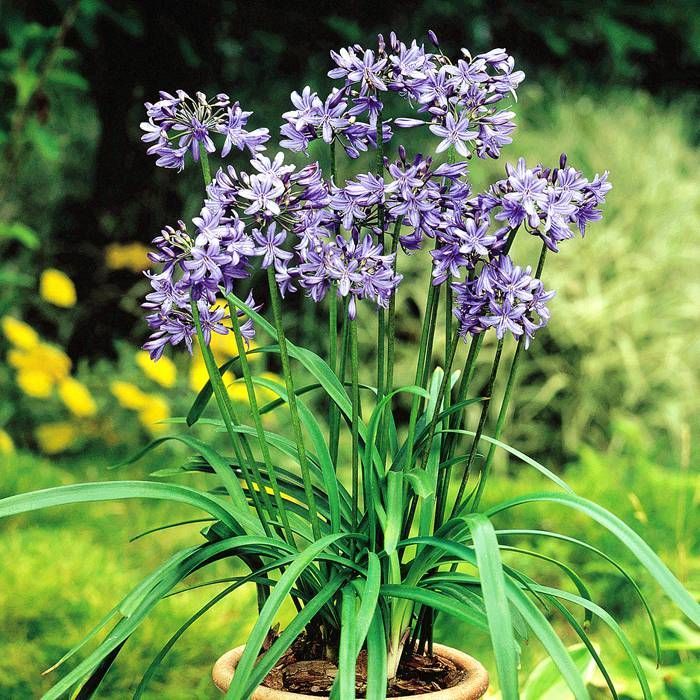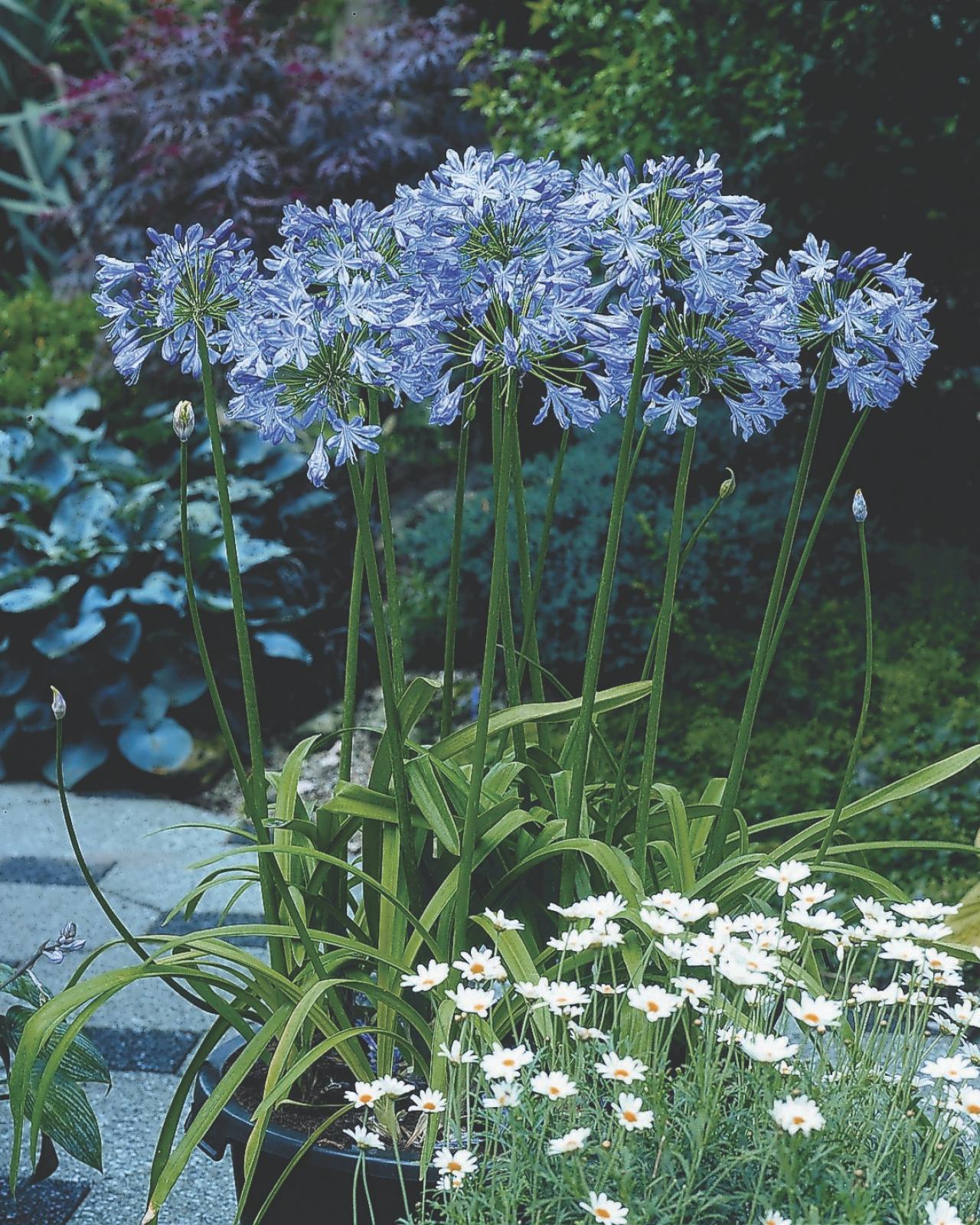Grasping the Art of Agapanthus Treatment: Necessary Actions for Healthy Development and Dynamic Blooms
In the realm of cultivation, the growing of agapanthus stands as a fulfilling venture for those that look for to support these classy flowering plants. With their striking flowers and graceful foliage, agapanthus has caught the interest of garden enthusiasts worldwide. Nonetheless, attaining optimal growth and vivid blooms calls for a nuanced technique that includes different essential actions. From picking the right variety to grasping pruning methods, the trip towards cultivating flourishing agapanthus plants is complex and holds the vital to unlocking the complete capacity of these botanical gems.

Picking the Right Agapanthus Range

When picking the best Agapanthus range for your garden, think about elements such as climate suitability, bloom color, and development behavior. Agapanthus, generally called Lily of the Nile or African lily, comes in a variety of shades ranging from shades of blue and purple to white. Pick a bloom color that complements your existing yard scheme to produce a harmonious landscape. In addition, consider the environment in your region to ensure the Agapanthus variety you select can thrive in your details problems. Some selections are much more tolerant of chilly temperature levels, while others favor warmer environments. Recognizing the growth habit of various Agapanthus varieties is vital for proper positioning within your garden. Some varieties have a clumping growth habit, ideal for boundaries or containers, while others have a more spreading nature, appropriate for ground cover or mass plantings. By thoroughly assessing these factors, you can pick the best Agapanthus variety to boost the appeal of your garden.
Ideal Planting Problems
Considering the optimum ecological demands is essential for successful Agapanthus cultivation. Agapanthus plants are sensitive to cold temperatures and should be secured from frost throughout winter months.
To ensure healthy development and lively blossoms, plant Agapanthus bulbs at a depth of concerning 2-4 inches and space them 8-12 inches apart. Adding organic issue, such as garden compost, to the soil can enhance water drainage and fertility, advertising durable root development. Mulching around the base of the plants assists retain dampness and suppresses weed development. Normal watering is vital, particularly during the expanding period, to keep the dirt continually wet but not soaked.
Watering and Feeding Tips
Maintaining correct wetness degrees and supplying essential nutrients are essential elements in the treatment program for Agapanthus plants. When it comes to watering Agapanthus, it is critical to strike an equilibrium. These plants choose regularly moist dirt however are at risk to root rot if overwatered.
Feeding Agapanthus is crucial for advertising healthy and balanced growth and respected blooms. Apply a balanced plant food, such as a 10-10-10 formula, in the very early spring as brand-new growth emerges. Repeat this application every 6-8 weeks throughout the expanding season. Stay clear of too much fertilization, as it can cause rich vegetation at the cost of blooms. Constantly follow the manufacturer's instructions for appropriate dilution and application approaches. By adhering to these watering and fertilizing pointers, you can guarantee your Agapanthus plants flourish and generate vibrant, durable blossoms.
Pruning Techniques for Agapanthus
Pruning Agapanthus plants at the proper times and with correct techniques is important for keeping their wellness and advertising optimal growth and flowering. The suitable time to prune Agapanthus is in late wintertime or very early springtime prior to brand-new development arises. Beginning by getting rid of any kind of yellowing or dead leaves near the base of the plant. Cut them as close to the ground as possible without damaging the emerging shoots.
For flowered stems, wait until the blooms have perished and after that cut them back to the base. This not just cleans the plant's appearance but also encourages the development of brand-new blossom buds. Deadheading invested flowers can also reroute the plant's energy into generating even more blossoms instead of establishing seeds. However, if you over here desire to collect seeds for breeding, leave some blossoms to completely dry and fully grown on the plant.
Bear in mind to utilize clean, sharp tools to make exact cuts and minimize the risk of introducing illness. Agapanthus. Normal pruning will help keep your Agapanthus looking healthy and neat while guaranteeing an abundant display of gorgeous flowers
Taking Care Of Typical Insects and Diseases
After making certain appropriate pruning methods for Agapanthus, it is vital to deal with common insects and conditions that can influence the health and vitality of these plants. One usual pest that impacts Agapanthus is the Agapanthus gall midget.
Furthermore, Agapanthus plants can endure from root rot if they are grown in badly draining pipes dirt. By being attentive and taking prompt activity against pests and conditions, you can assist your Agapanthus plants prosper and generate lively blossoms. Agapanthus.

Verdict
Finally, understanding the art of agapanthus treatment includes selecting the right variety, supplying ideal growing conditions, proper watering and feeding, proper pruning techniques, and addressing usual bugs and illness. By following these essential actions, you can make sure healthy development and lively blooms for your agapanthus plants. Bear in mind to regularly check and site link preserve your plants to promote their general well-being and long life.
To make sure healthy development and dynamic blossoms, plant Agapanthus light bulbs at a depth of regarding 2-4 inches and space them 8-12 inches apart. By adhering to these watering and fertilizing tips, you can guarantee your Agapanthus plants thrive and generate vibrant, lasting blooms.
One typical insect that influences Agapanthus is the Agapanthus gall midget. In addition, Agapanthus her latest blog plants can endure from root rot if they are planted in improperly draining soil. By adhering to these necessary steps, you can make certain healthy development and vibrant blossoms for your agapanthus plants.